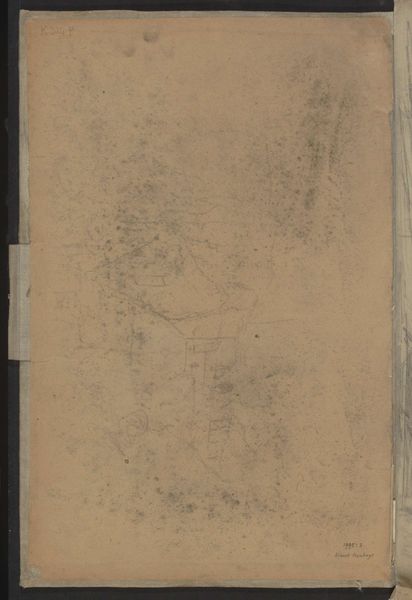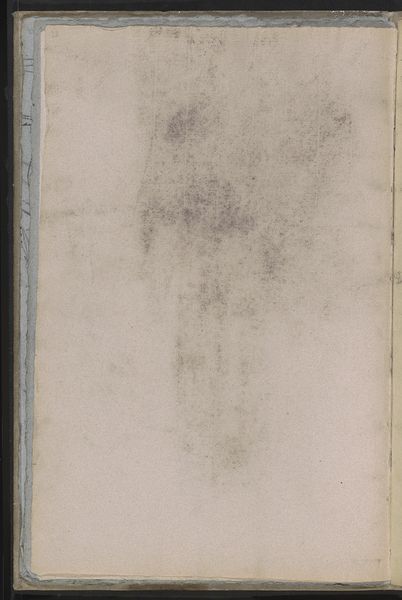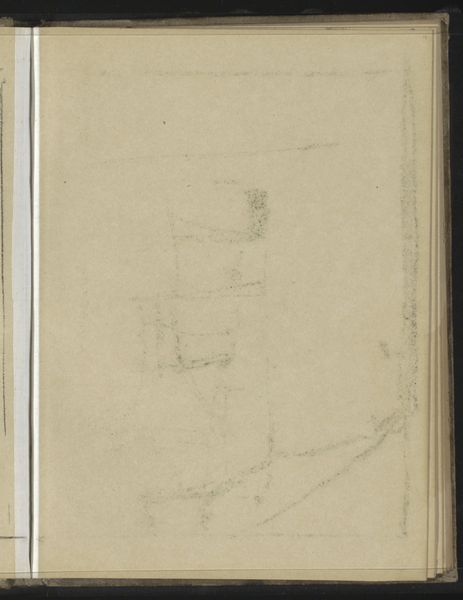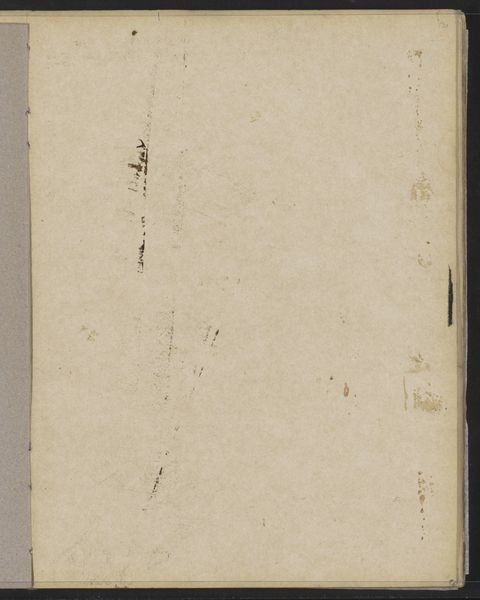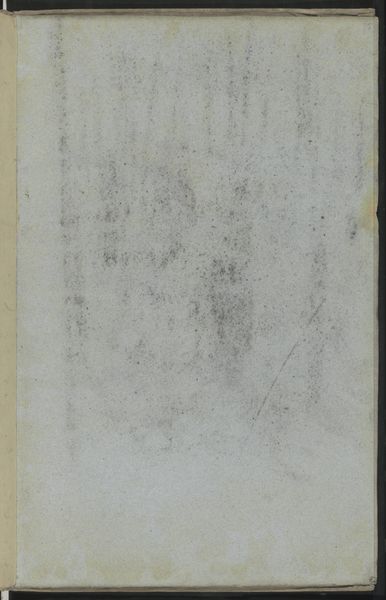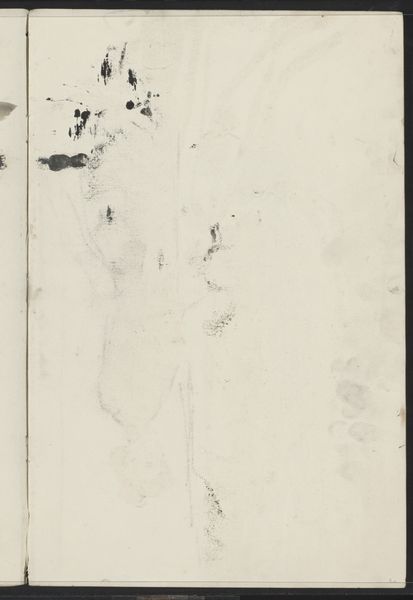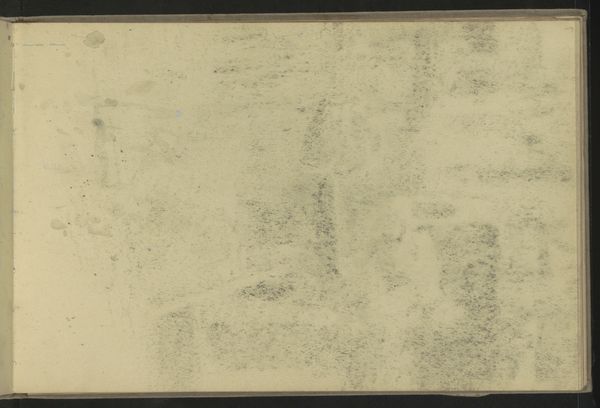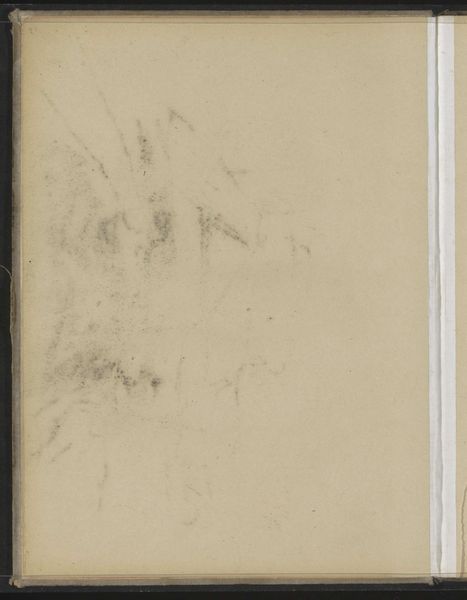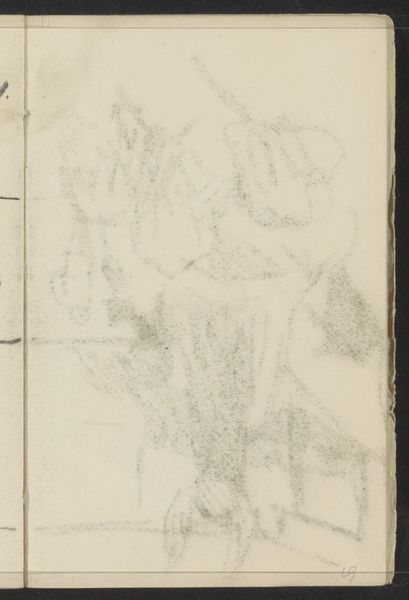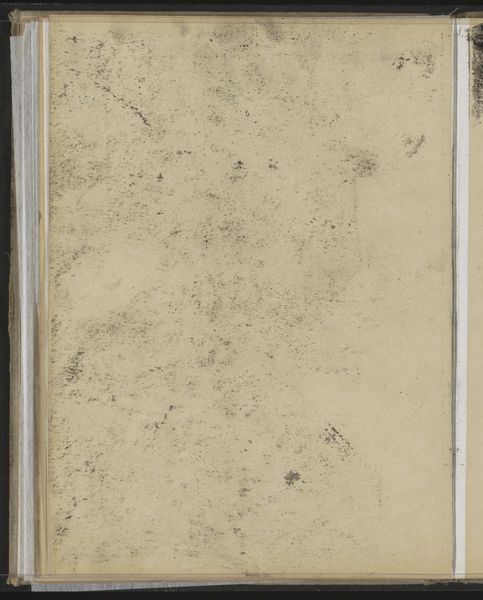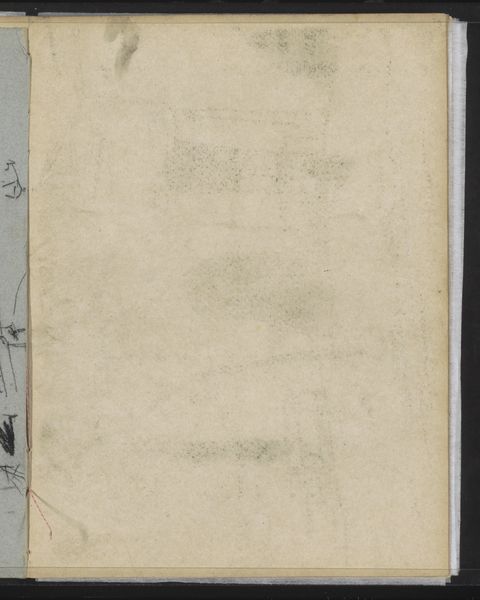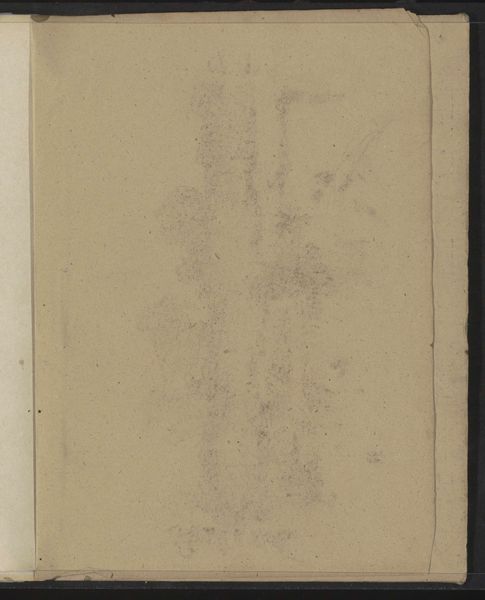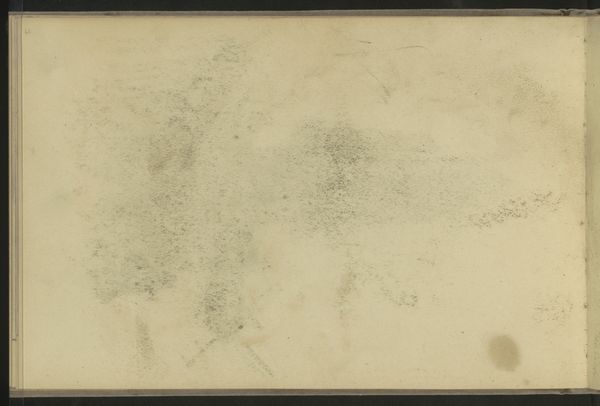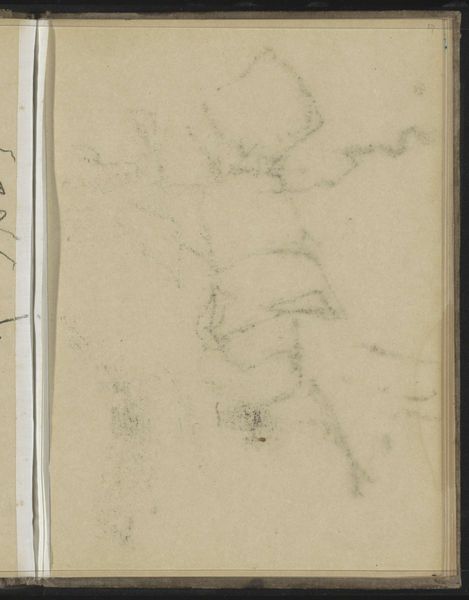
Copyright: Rijks Museum: Open Domain
Editor: Here we have Willem Witsen's "Abklatsch van de krijttekening op pagina 13," made between 1893 and 1897, using ink on paper. The image is faint, like a ghostly memory of a landscape. What historical context might illuminate this rather subtle piece? Curator: Given the period and Witsen's involvement in Dutch Impressionism, consider the socio-political backdrop. This was a time of burgeoning nationalism intertwined with artistic movements. Landscape art, like this piece, often played a role in shaping national identity and pride. But how does this particular drawing contribute, or perhaps resist, those sentiments, given its apparent lack of grandeur? Editor: That's a great point. It's less a celebration of the land and more like a quiet observation, almost melancholy. Do you think its subtlety might be a form of resistance? Curator: It's possible. Artists often negotiated their roles within prevailing ideologies. Perhaps Witsen is commenting on the commercialization of landscape or even questioning the dominant narratives. How do you think the choice of such a delicate medium as ink on paper impacts its message? Editor: It feels very personal, intimate. The fleeting quality of the ink mirrors the ephemeral nature of memory and perhaps suggests a fragile connection to the land. Curator: Exactly! The medium and style contribute to a more nuanced and personal engagement with the landscape. It invites viewers to contemplate their relationship with the environment beyond grand patriotic statements. Editor: So, it's not just a pretty picture but a commentary on how national identity is formed and experienced on a personal level. I'll never look at a landscape the same way again! Curator: And that's the power of art history—to reveal the intricate dialogues between art, society, and individual experience.
Comments
No comments
Be the first to comment and join the conversation on the ultimate creative platform.
